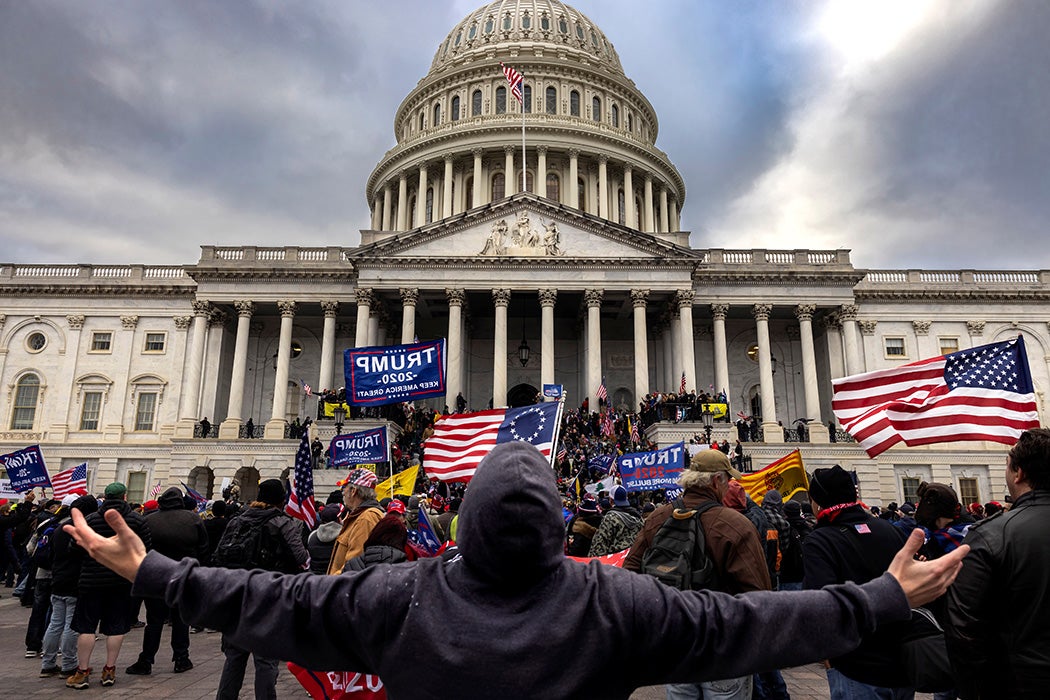In late January, the Department of Homeland Security warned U.S. lawmakers that the country faces a growing threat of violence from domestic extremists and, in particular, white supremacists. It wasn’t the first time that officials raised this alarm, but concerns about domestic terrorism had spiked after a pro-Trump mob stormed the U.S. Capitol building.
The failed insurrection was not a one-off event. As political scientist Vincent A. Auger argued in June 2020, far-right extremist violence might constitute a “new wave” of domestic terrorism in global history. Over two decades ago, scholar David Rapoport wrote that Western countries have witnessed four major waves of terrorist activity since the nineteenth century: an “anarchist” wave of assassinations sparked in Russia in the 1870s that spread across the globe; an “anti-colonial” wave dominant from the 1920s through the 1960s; a “New Left” wave in response to the Vietnam War through the 1980s; and a “religious” wave since 1979 spurred by the Iranian Revolution and the Soviet invasion of Afghanistan.
Building on Rapoport’s theory, Auger posits that the contemporary brand of domestic terrorism—typically motivated by strident nationalism, fascism, racism, anti-Semitism, chauvinism, nativism, and xenophobia—might constitute a “fifth wave” of transnational terrorism that dates back to the early aughts. From 2010 to 2018, the Institute for Economics and Peace think tank recorded a 320 percent increase in far-right terrorist incidents across North America, Europe, New Zealand, and Australia, Auger writes. White supremacists were responsible for 76 percent of far-right extremist killings in the U.S. from 2009 to 2018.
Many domestic terrorists in these regions share a “triggering cause,” namely a rise in right-wing or populist politics in their countries and concern about rising levels of immigration. Many right-wing terrorist ideologies anticipate the arrival of immigrant communities as an impending “white genocide”; these actors commit violence to force a stop to immigration and “awaken” the white populace to the “threat” of white demographic decline.
“[T]he election of Donald Trump was welcomed by many white supremacists in the U.S. as validation of their worldview,” Auger adds. “Some—such as the terrorist who attacked a Walmart in El Paso, Texas, in response to ‘the Hispanic invasion of Texas’—consciously echoed the president’s anti-immigrant rhetoric.”
Weekly Newsletter
White supremacist groups, such as the Ku Klux Klan in the U.S., have terrorized and murdered for centuries. But Auger argues that terrorists in this new wave distinguish themselves from previous movements through an increased interest in mass-casualty attacks, such as the white supremacist who published an online manifesto immediately before livestreaming the shooting of mosques in Christchurch, New Zealand, in 2019. Social media has also provided this new wave with novel tools for mass communication and coordination of violence.
The record of right-wing terrorists over the last decades bolsters the Department of Homeland Security’s prediction: The kind of violence on display during the Capitol attack will not subside anytime soon. “[I]f this is a fifth wave,” Auger adds, “we may be dealing with an enhanced threat from right-wing terror for many years to come.”
Support JSTOR Daily! Join our new membership program on Patreon today.







